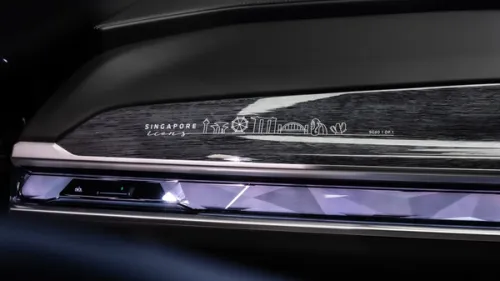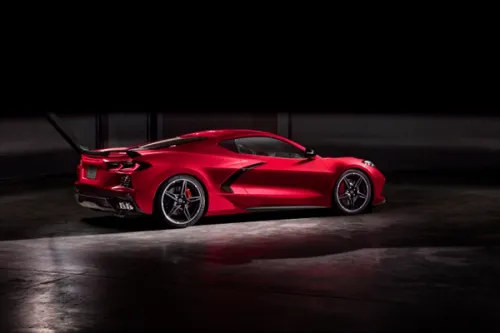Toyota Camry Review: A Bigger, Bolder Camry
“Nothing succeeds like success”, so the saying goes, and this is definitely the case with the Toyota Camry.


“Nothing succeeds like success”, so the saying goes, and this is definitely the case with the Toyota Camry. And after a couple of days with the latest 2.4-litre version, it is obvious that Toyota is not taking the Camry’s success for granted, but is in fact aware of the competition, and has taken steps to address them with the new model. The most apparent thing about the new is that it appears to have gone to the gym for a workout. Out with the previous model’s delicate, almost fragile pointed lines, replaced instead by an obviously chunkier and more impressive-looking new car. The new Camry certainly commands a greater presence on the road, not just in terms of size, but also in the way it sits on the road. Instead of standing on its tip toes, the new model looks low and hunkered down, heavy and substantial, like a rugby player ready for a scrum.
Every where one looks around the Camry, the new car seems to have bulked-up. The headlamps are squarer and fuller compared to the pointed shape of the last model. The grille seems to sink into the bodywork rather than being grafted on, with the whole body having softer curves rather than a clean, chiseled look. If it were not for the strong brand recognition for the Toyota brand and the Camry nameplate, there seems to be no relationship between the last Camry and the new one.
This thorough revision of focus seems to have penetrated the cabin styling as well. The first thing that one notices is that there is an impressive centre console housing the digital controls for the climate control and hi-fi. The entire set-up gets a classy high-sheen finish, looking like it came straight out of a Lexus. At night, the entire panel is backlit, something even Lexus models don’t have yet. Another Lexus-like feature are the blacklit instruments, especially the way in which they come on sequentially (first the red needles glow, then the orange and green warning lights, and then finally all the numbers and remaining gauges in blue) when the ignition button is pushed to start the car. It is all very high-tech and futuristic, succeeding in making the new Camry feel nicely progressive. The walnut paneling on the centre console and the doors is discreet and classy, nicely complementing the soothing two-tone brown and beige interior. It certainly does a good job of soothing nerves after a hectic day at work. While the driver gets space-age instrumentation and cockpit, it is the rear passengers that benefit from the new Camry’s chunkier lines and longer wheelbase. There is more head and leg room at the back, and it seems the needs of the those in the rear have been carefully considered. Perhaps Toyota’s marketing feedback is that the Camry is often chauffeur driven, and thus making the towkay feel pampered has become a priority. One definite plus for anyone sitting in the back is access to the buttons for sliding the front passenger seat forward when it is vacant. The rear passengers also get rear airvents, not simply grafted on but, neatly styled to the back of the centre armrest. With all this effort to make the rear so comfortable, it may make the execs, for which the Camry is the standard issue company car, start to request a company driver in addition to just having a car.
On the way the car feels to drive, it seems to be a reflection of it’s more its beefed-up exterior. The suspension of the new car has definitely been tuned to be move communicative with the road surface – this is obvious with as irregularities that would otherwise be cushioned, can be felt by those in the cabin. This is made more glaring because in all other respects, the Camry is awesomely smooth and quiet.
Without a doubt, the new Camry will be a success. Even before it was launched, over a thousand bookings were placed for the car. It is also obvious Toyota has also done its part to make the car address issues that the last model faced against the competition. Take for example the impressively-designed centre console – could the fact that the Honda Accord has a fully-integrated climate control and hi-fi system have influenced Toyota to do the same with the Camry? Similarly, has the Nissan Cefiro’s firmly set-up suspension caused Toyota to stiffen the Camry’s suspension rates? While its good to stay ahead of the competition, simply addressing the competition doesn’t help to give the Camry any particular character or strong suit. It remains a very competent executive car, and one that will be sought after by ranks highly competent executives. A renegade, or passionate driver’s car, it certainly isn’t.
That said, it has raised the standard once again, and just in the knick of time as well. The latest versions of the Hyundai Sonata and Kia Magentis are certainly very competent, and were starting to approach the previous Camry’s standards of refinement and finish. Now that the new Camry is out, it is back to the drawing board for everyone else.
Credits: Justin Lee








Get the Best Price for your used car
from 500+ dealers in 24 hours

- Convenient and Hassle-Free
- Consumer Protection
Transparent Process
With No Obligation








